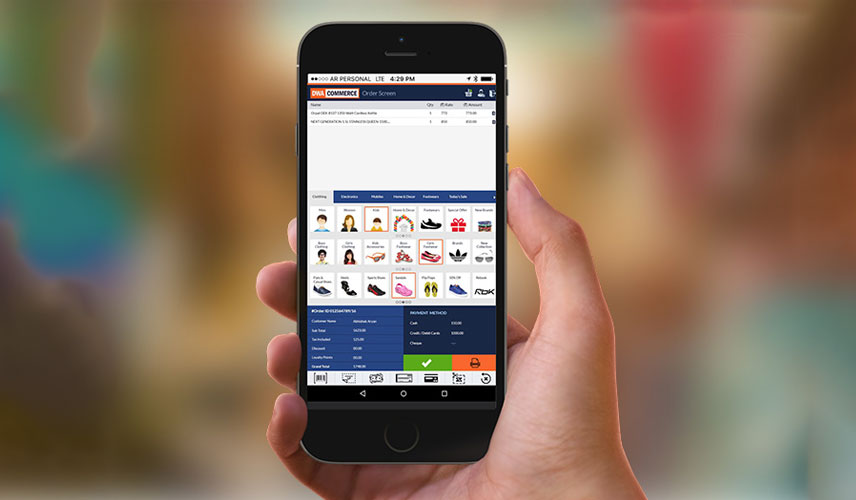The Advantages of Headless Commerce: Unlocking New Possibilities for E-commerce
In recent years, there has been a shift in the way e-commerce businesses approach their online shopping experience. The traditional approach of using a monolithic platform for all e-commerce activities is slowly being replaced by a more flexible and scalable architecture called headless commerce. This new approach is gaining popularity among e-commerce businesses because of its many advantages over traditional e-commerce platforms.
In this article, we will explore the top 6 benefits of headless commerce and how it can transform the online shopping experience for both businesses and customers.
Table of Contents
- What is Headless Commerce?
- Improved Performance and Scalability
- Flexibility in Design and User Experience
- Increased Integration Capabilities
- Streamlined Content Management
- Enhanced Security and Maintenance
- Conclusion
- FAQs
What is Headless Commerce?
Headless commerce is an e-commerce architecture where the front-end and back-end systems are decoupled, allowing for more flexibility and customization of the user experience. In traditional e-commerce platforms, the front-end (or "head") and back-end (or "body") are tightly integrated, limiting the ability to customize the user interface or change the underlying platform.
With headless commerce, the front-end is built independently of the back-end, using APIs to connect to the e-commerce platform. This allows for greater flexibility and customization of the user experience, including the ability to use different technologies and programming languages to build the front-end.
Improved Performance and Scalability
One of the major advantages of headless commerce is improved performance and scalability. Because the front-end and back-end systems are decoupled, they can be optimized separately for better performance. This allows businesses to scale their e-commerce platform more easily, without worrying about the impact on the user experience.
Additionally, because headless commerce allows businesses to use different technologies and programming languages for the front-end, they can choose the best tools for the job. This means that businesses can build a faster and more responsive user interface, improving the overall user experience.
Flexibility in Design and User Experience
Headless commerce also offers greater flexibility in design and user experience. Because the front-end is decoupled from the back-end, businesses can easily change the design or layout of their website without affecting the underlying e-commerce platform. This means that businesses can iterate on their design more quickly, testing and refining different layouts and user experiences.
Additionally, headless commerce allows businesses to create a more personalized user experience. Because the front-end can be customized to each individual user, businesses can create a more tailored shopping experience that meets the needs of their customers.
Increased Integration Capabilities
Another advantage of headless commerce is increased integration capabilities. Because the front-end and back-end systems are decoupled, businesses can easily integrate with third-party systems and services. This allows businesses to add new functionality to their e-commerce platform without having to rebuild the entire system.
For example, businesses can easily integrate with marketing automation systems, customer relationship management (CRM) systems, or payment gateways. This allows businesses to create a more seamless and integrated shopping experience for their customers.
Streamlined Content Management
Headless commerce also offers streamlined content management. Because the front-end and back-end systems are decoupled, businesses can manage their content more easily. This means that businesses can create and manage their content in one central location, without having to worry about the impact on the user experience.
Additionally, headless commerce allows businesses to create and manage content in different formats, including video, audio, and interactive content. This allows businesses to create a more engaging and dynamic shopping experience for their customers.
Enhanced Security and Maintenance
Finally, headless commerce provides enhanced security and maintenance. Because the front-end and back-end systems are decoupled, businesses can secure their e-commerce platform more easily. This means that businesses can implement different security protocols for each system, reducing the risk of security breaches.
Additionally, because the front-end and back-end systems are decoupled, businesses can perform maintenance and updates more easily. This means that businesses can update one system without affecting the other, reducing downtime and improving overall system reliability.
Conclusion
In conclusion, headless commerce is a game-changing e-commerce architecture that offers numerous advantages over traditional e-commerce platforms. With improved performance and scalability, flexibility in design and user experience, increased integration capabilities, streamlined content management, and enhanced security and maintenance, businesses can transform their online shopping experience for both themselves and their customers.
FAQs
- Is headless commerce suitable for small businesses?
- Yes, headless commerce is suitable for businesses of all sizes.
- Does headless commerce require a high level of technical expertise?
- Yes, headless commerce requires a certain level of technical expertise, but there are many resources available to help businesses implement and manage a headless commerce platform.
- Can businesses still use popular e-commerce platforms like Shopify or WooCommerce with headless commerce?
- Yes, businesses can still use popular e-commerce platforms like Shopify or WooCommerce as the back-end for their headless commerce platform.
- Is headless commerce more expensive than traditional e-commerce platforms?
- Headless commerce can be more expensive to implement initially, but it can also offer cost savings in the long term due to increased flexibility and scalability.
- How long does it take to implement a headless commerce platform?
- The implementation timeline for a headless commerce platform can vary depending on the complexity of the business and the platform, but it typically takes several months to a year to implement.








